Tenorio, Thomas
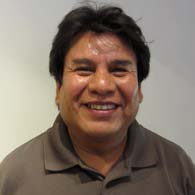
Born in 1963 at Santo Domingo Pueblo, Thomas Tenorio started making pottery in the early 1990s. He grew up thinking he came from a family of heishi makers. Then he found out his maternal great-grandmother made Santo Domingo pots and sold them by the side of the highway in the 1940s. Realizing that these days only a few families continue to make Santo Domingo-style pottery he was inspired to learn so that he could help keep the tradition alive.
Thomas tells us he is a self-taught potter: “Nobody showed me how. I learned on my own through a lot of trial and error.” He does credit Kenneth Chapman’s book The Pottery of Santo Domingo Pueblo for providing him with examples of old Santo Domingo designs.
Thomas uses local Santo Domingo clay which he cleans, mixes, hand-coils, shapes, decorates and then fires outdoors in an open flame, just as his ancestors did for hundreds of years before him. He learned to protect his pots during the firing, surrounding them with a metal cage so no fuel touches them and burns the pot. It took him years to figure out the complicated chemistries of the buff slip and bee weed paint (made from a wild spinach that grows in New Mexico).
Thomas’ greatest pleasure comes through recognition of his current work. While he enjoys the process, he “gets lost in the painting and could sit for hours and hours and paint.” He especially loves painting the swirls of the water, the wind and the corn. He also loves painting his bowls, especially if they contain fish or a traditional Santo Domingo bird.
Thomas is exploring new shapes and designs on his more recent work but he isn’t forgetting the traditional shapes and designs of Kewa on his huge pots.
Thomas read somewhere that he was a miniature potter. We laughed when he told us that, because he is not a short person and some of his more recent pieces have been almost as big as he is.
When we asked him where he gets his inspiration he replied, “My inspiration comes from my traditional faith at home and from nature.”
Thomas often participates in the Heard Museum Guild Indian Art Fair (where he earned the 2012 First Place ribbon for Traditional Painted Pottery). He earned the same First Place award at the Heard in 2007 and has earned First and Second Place ribbons at the Santa Fe Indian Market in 2015, 2014, 2011 and 2010. We are sure there are more, it’s just hard to keep up.
In 2013 Thomas had an extremely successful one-man show at Andrea Fisher Fine Pottery where he did an outdoor firing demonstration for some of our best customers.
Thomas signs his pottery “Thomas Tenorio, Kewa, NM” and sometimes adds the year. His pottery can be found in the collections of:
- The White House, Washington, DC
- Rockefeller Museum, New York City
- Smithsonian Institute, Washington, DC
- Museum of Indian Arts & Culture, Santa Fe, NM
- Pueblo Grande Museum, Phoenix, AZ
- Crocker Art Museum, Sacramento, CA
Some Awards Earned by Thomas
- 2023 Santa Fe Indian Market, Classification IIB, Category 603 – Painted polychrome pottery in the style of Cochiti, Santo Domingo, Santa Clara, San Ildefonso, Tesuque, Nambe, San Juan, Pojoaque, Any form, Second Place
- 2023 Santa Fe Indian Market, Classification IIB, Category 605 – Figures/Manas, Second Place
- 2018 Santa Fe Indian Market, Classification II – Pottery, Division B – Traditional Painted Pottery, Category 603 – Painted Polychrome Pottery in the Style of Cochiti, Santo Domingo, Santa Clara, San Ildefonso, Tesuque, Nambe, San Juan, Pojoaque, Any Form: First Place
- 2018 Santa Fe Indian Market, Classification II – Pottery, Division B – Traditional Painted Pottery, Category 603 – Painted Polychrome Pottery in the Style of Cochiti, Santo Domingo, Santa Clara, San Ildefonso, Tesuque, Nambe, San Juan, Pojoaque, Any Form: Second Place
- 2018 Santa Fe Indian Market, Pueblo Pottery Excellence Award. For Creative Excellence in the Use of Traditional Materials and Native Techniques and Designs in Pueblo Pottery
- 2012 Heard Museum Guild Indian Fair & Market. Heard Museum. Phoenix, AZ. Class. II – Pottery, Div. A – Traditional, native clay, hand build, painted, First Place
- 2010 Heard Museum Guild Indian Fair & Market. Phoenix, AZ. Class. II – Pottery, traditional, native clay, hand built, painted, Honorable Mention
- 2008 Heard Museum Guild Indian Fair & Market. Heard Museum. Phoenix, AZ. Class. II – Pottery, Div. A – Traditional, Native clay, hand built, painted, First Place
Showing all 6 results
-
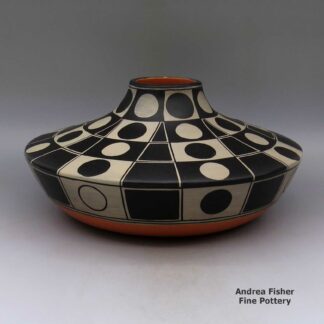
Thomas Tenorio, zzsd2l252: Polychrome jar with geometric design
$3,400.00 Add to cart -

Thomas Tenorio, zzsd3b230, Large polychrome jar with a geometric design
$2,950.00 Add to cart -
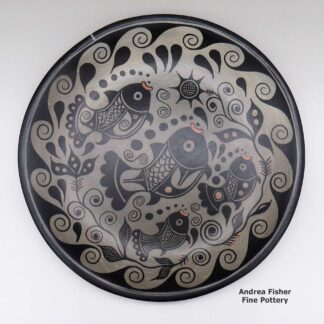
Thomas Tenorio, zzsd3b231, Plate with geometric design
$850.00 Add to cart -

Thomas Tenorio, zzsd3c060, Polychrome cylinder with a geometric design
$2,750.00 Add to cart -
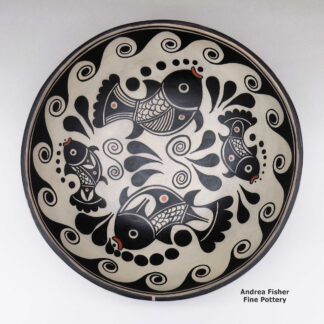
Thomas Tenorio, zzsd3c062m2, Polychrome bowl with a geometric design
$1,550.00 Add to cart -
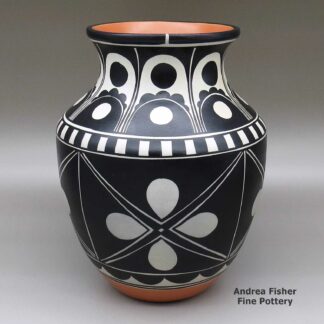
Thomas Tenorio, zzsd3c161, Polychrome jar with a geometric design
$2,400.00 Add to cart
Showing all 6 results